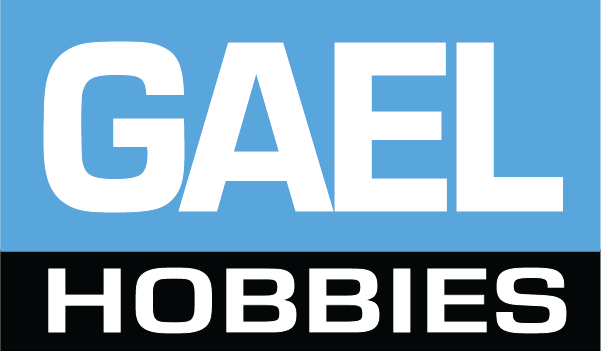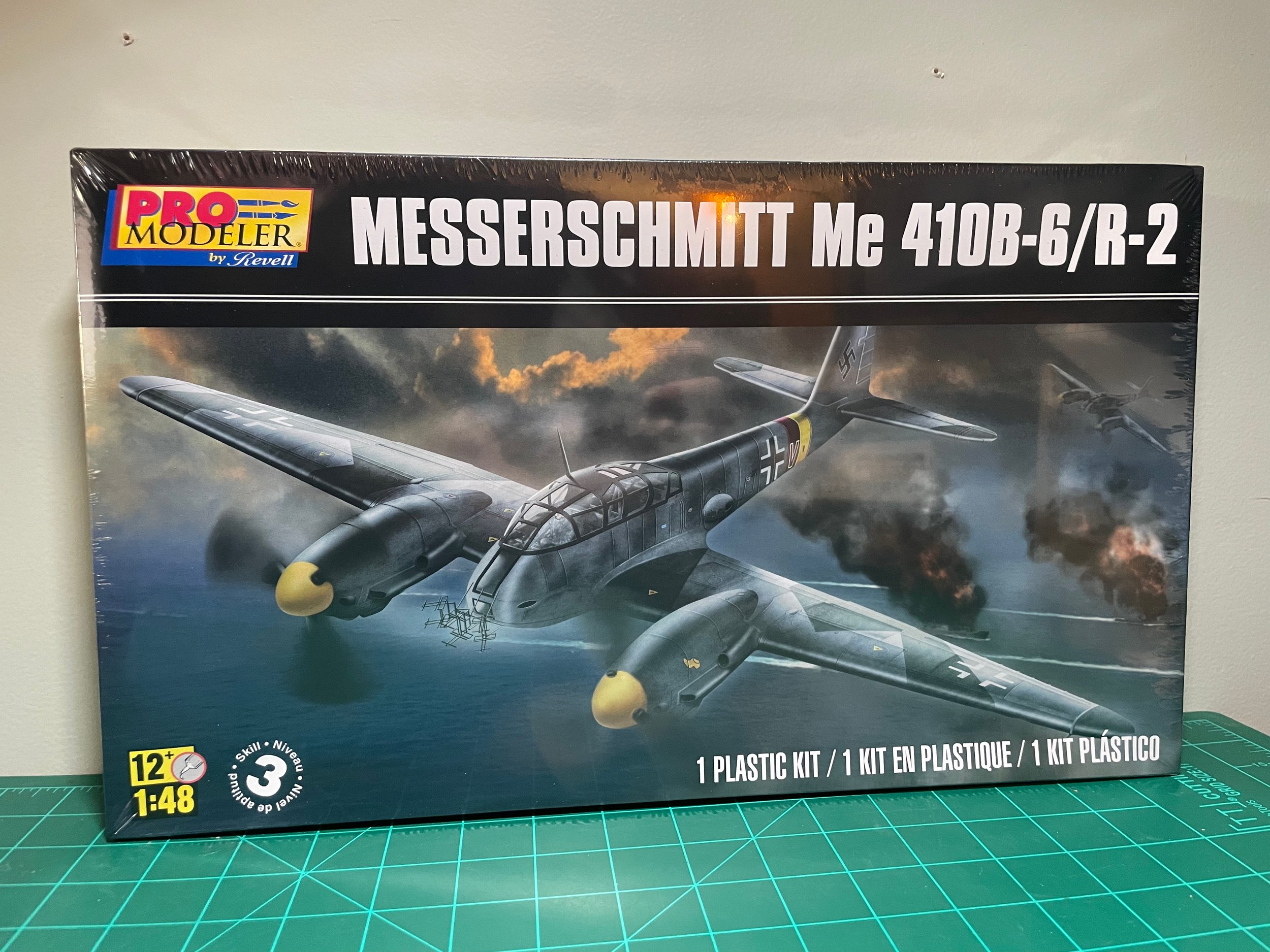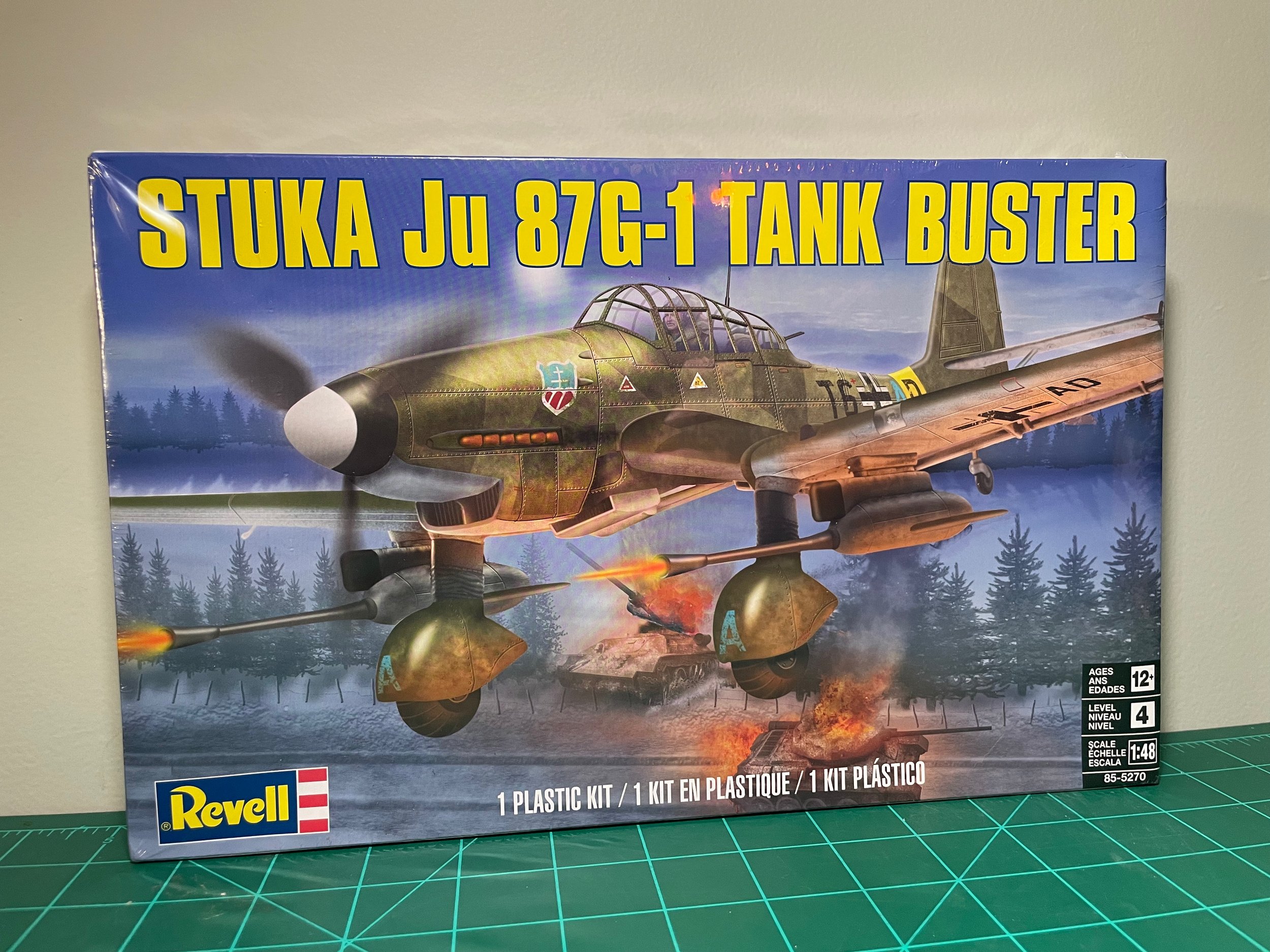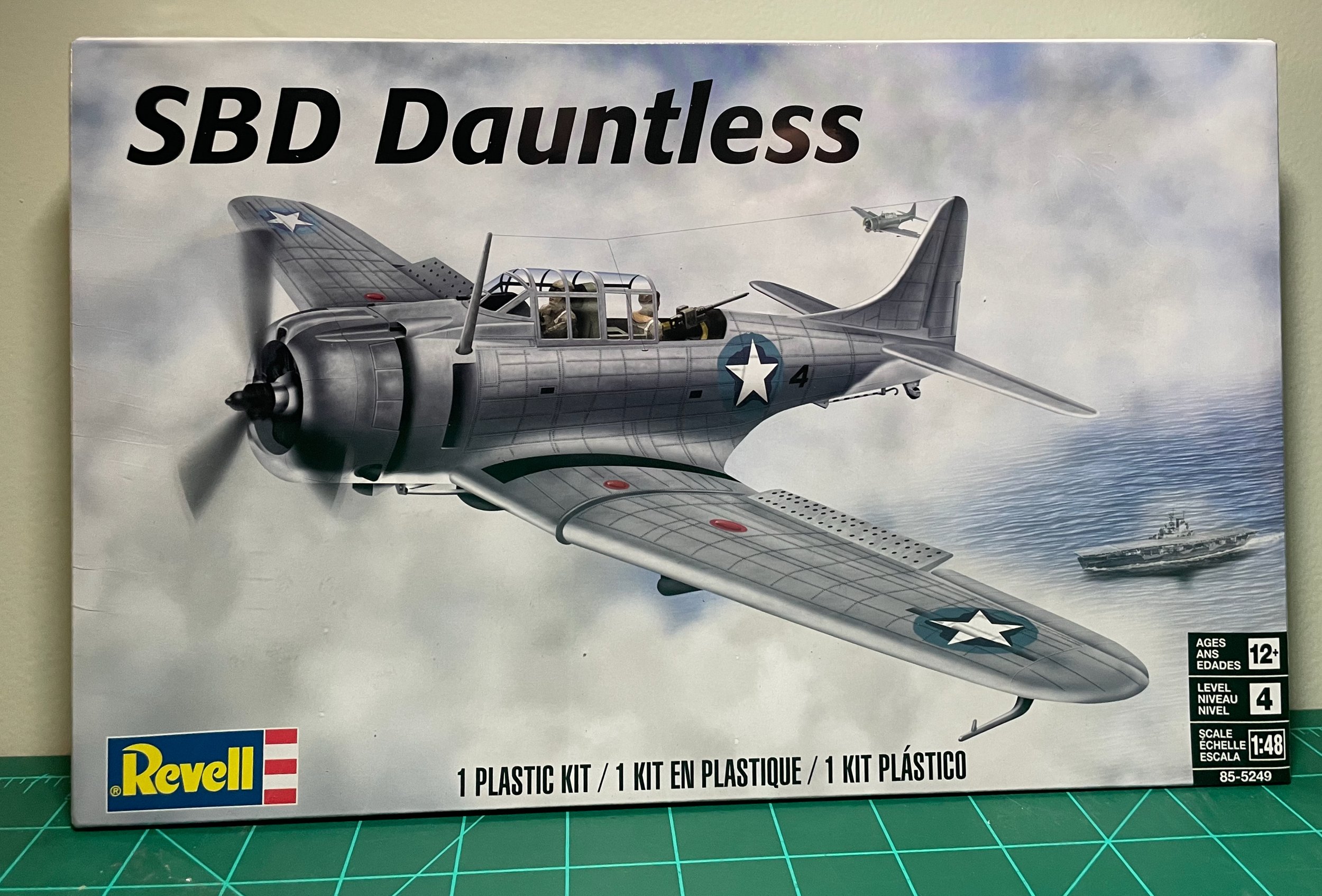1/48 Magic Factory F4U-1A/2 Corsair Dual Combo#5001



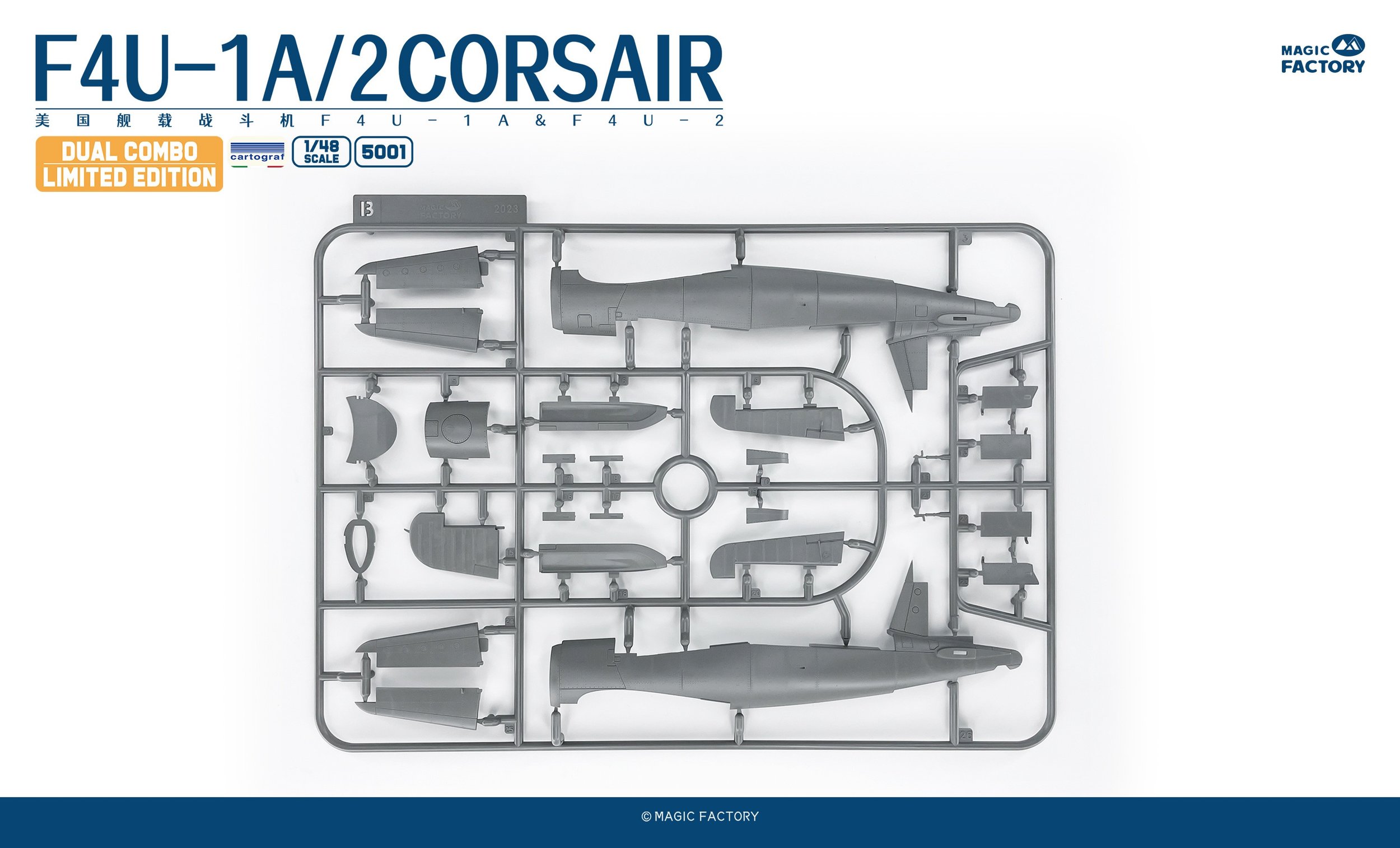

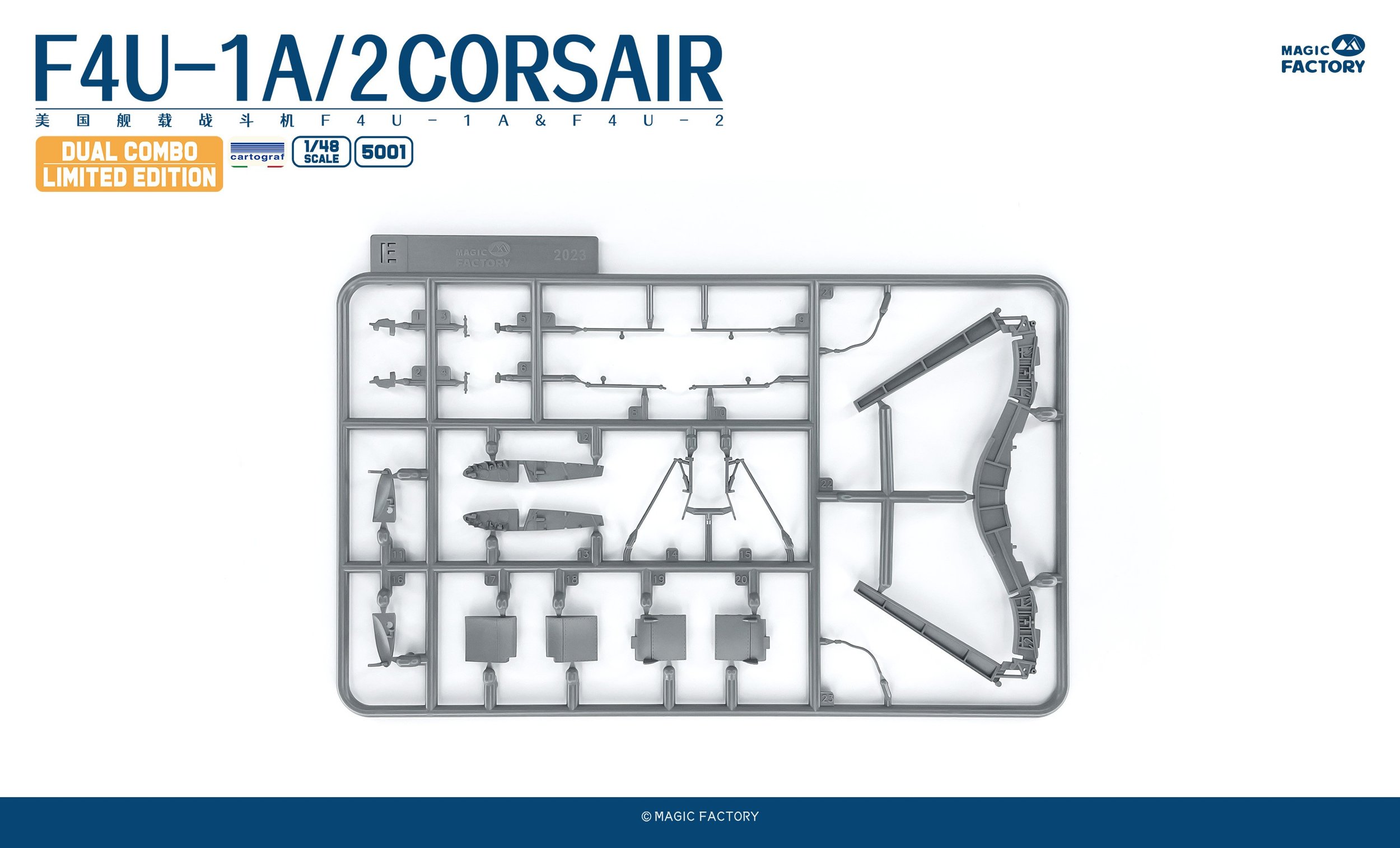






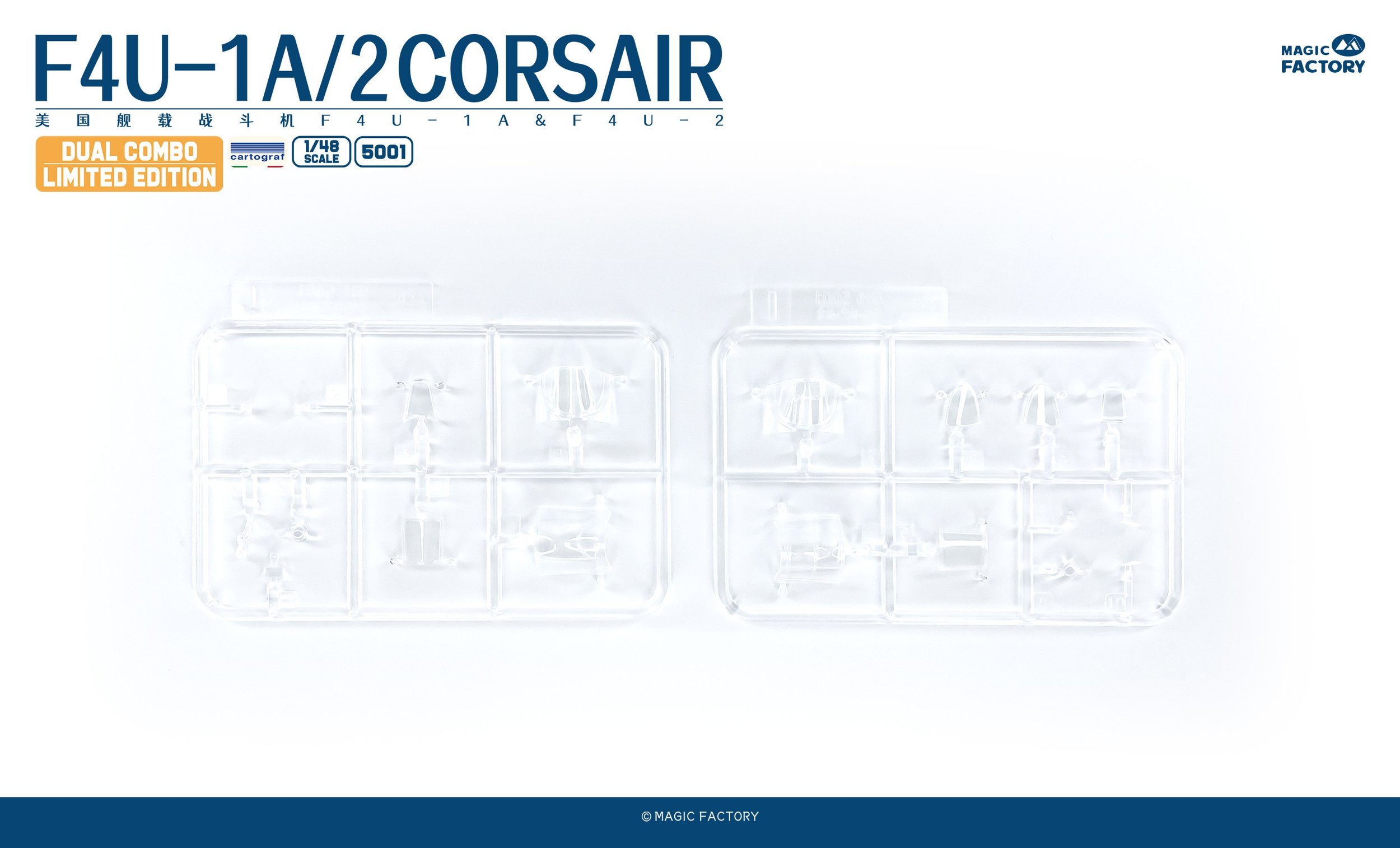
1/48 Magic Factory F4U-1A/2 Corsair Dual Combo#5001
GaelHobbies features the incredible 1/48 Magic Factory F4U-1A/2 Corsair Dual Combo#5001. F4U Corsair is a famous carrier-based fighter aircraft deployed by U.S. Navy in WWII. With the first prototype manufactured in 1940 and final variant produced in 1953, it has the longest production run of any U.S. piston-engine fighters.
F4U is a single-seat, single-engine and inverted "gull wing" fighter who is renowned for its good performance, speed, ruggedness, and firepower. It is the first fighter in US with a speed over 640km/h and one of the fastest piston-engined fighters. Beside air warfare, it also could be used in tactical bombing. F4U-1A is an upgraded variant of F4U-1. The most notable distinction from F4U-1 includes lifting the pilot’s seat by 18cm, replacing the -1's "birdcage" framed canopy with a semi-bubble canopy, retaining only two frames on either side and a distinctive metal hood over the pilot's head. Thus the pilot’s overall visibility was greatly increased. Furthermore, based on actual experience of F4U-1, F4U-1A also removed top cowl flaps of cowling and replaced the open window in the floor of the cockpit with a mentalF4U Corsair is a famous carrier-based fighter aircraft deployed by U.S. Navy in WWII. With the first prototype manufactured in 1940 and final variant produced in 1953, it has the longest production run of any U.S. piston-engined fighters. F4U is a single-seat, single-engine and inverted "gull wing" fighter who is renowned for its good performance, speed, ruggedness, and firepower. It is the first fighter in US with a speed over 640km/h and one of the fastest piston-engined fighters. Beside air warfare, it also could be used in tactical bombing. F4U-1A is an upgraded variant of F4U-1.
The most notable distinction from F4U-1 includes lifting the pilot’s seat by 18cm, replacing the -1's "birdcage" framed canopy with a semi-bubble canopy, retaining only two frames on either side and a distinctive metal hood over the pilot's head. Thus the pilot’s overall visibility was greatly increased. Furthermore, based on actual experience of F4U-1, F4U-1A also removed top cowl flaps of cowling and replaced the open window in the floor of the cockpit with a mental plate. The initial design of night-fighter Corsair was finished in Dec 7 1941, the date of Japanese’ surprise attack on Pearl Harbor. The first prototype, designated XF4U-2, was modified based on a F4U-1 of first mass production and took its first fly. There were total 32 F4U-2s were converted from F4U-1s at Naval Aircraft Factory at Philadelphia. The F4U-2 has an AIA radar antenna mounted in a radome, placed two thirds of the way along the starboard wing. The outermost machine gun was removed from that wing to help balance the additional weight.The AIA radar system is capable of searching enemy fighters within a range of 6km. Moreover, F4U-2 was also equipped with a flame hider, radio altimeter, radar beacon responder, and autopilot, improved the lighting system, and replaced the standard high-frequency radio with a very high frequency radio. plate. The initial design of night-fighter Corsair was finished in Dec 7 1941, the date of Japanese’ surprise attack on Pearl Harbor. The first prototype, designated XF4U-2, was modified based on a F4U-1 of first mass production and took its first fly. There were total 32 F4U-2s were converted from F4U-1s at Naval Aircraft Factory at Philadelphia. The F4U-2 has an AIA radar antenna mounted in a radome, placed two thirds of the way along the starboard wing. The outermost machine gun was removed from that wing to help balance the additional weight.The AIA radar system is capable of searching enemy fighters within a range of 6km. Moreover, F4U-2 was also equipped with a flame hider, radio altimeter, radar beacon responder, and autopilot, improved the lighting system, and replaced the standard high-frequency radio with a very high frequency radio.
